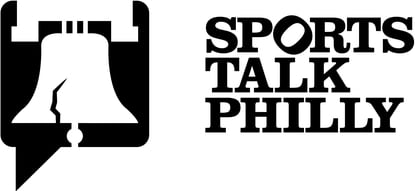Patrick Causey, on Twitter @InsdeTheHuddle
The Philadelphia Eagles are reeling. They are 0-2, they have lost three starters to injury this week alone, and they have to go on the road to face a formidable New York Jets team in a must win situation.
The Jets, meanwhile, come in hot, winning their first two games against the Cleveland Browns and Indianapolis Colts by a combined score of 51-17. Under new head coach Todd Bowles, the Jets are led by an opportunistic, stifling defense and a steady offense led by Ryan Fitzpatrick.
Just how important is this game? Andrew Porter of CBSPhilly.com really drives home the point with this tweet:
0-3 teams have made playoffs 2% of time. 1-2 teams have made playoffs 26% of time. #Eagles
— Andrew Porter (@And_Porter) September 23, 2015
In other words, win, and the Eagles still have a chance (albeit a small one). Lose, and our season is done after only three weeks.
No pressure, fellas.
Let's get a scouting report on the Jets. I broke it down into three categories: the defense, offense, and what we can learn from the Eagles games against the Arizona Cardinals, when Bowles was defensive coordinator.
It Starts With the Defense
The Jets are coached by former Eagles defensive coordinator, Todd Bowles, who is known for his aggressive, blitz happy defensive scheme that should test the Eagles skittish quarterback and leaky offensive line early and often.
Across the board, the Jets have one of the best defenses in the league. Below is the Jets' defensive rank after two games this year:
- Total Points: 1st
- Pts/G: 1st
- Turnovers forced: 1st
- Turnover differential: 1st
- Total Yards Allowed: 10th
- Rushing Yards Allowed: 14th
- Passing Yards Allowed: 17th
Two weeks of football is normally too small of a sample size to reach any definitive conclusions about a team. But the tape lends credence to the idea that the Jets defense is very good. They have talented playmakers at all three levels of the defense: defensive line, linebackers and in the secondary.
Blitz-heavy Scheme
Bowles defense is known for one thing: heavy blitzing that is designed to put constant pressure on the quarterback and lead to turnovers. Last week against Andrew Luck, Bowles sent the blitz on 18 of Luck's 41 passes, and Luck was under pressure on 21 of those 41 pass plays. Luck was terrible, finishing the game going 21/37 for 250 yards, 1 touchdown, 3 interceptions and a 52.8 quarterback rating.
Bowles brings pressure in a variety of ways, often disguising his blitz presnap to maximize confusion. And while we will see a variety of zone and cornerback blitzes, Bowles bread and butter is the Double A Gap blitz.
On Luck's first interception, the Jets disguised their blitz by having two of the would-be blitzers drop back in coverage. The other linebackers shot through the A gaps, which was picked up well by the Colts offensive line. But the Colts failed to account for the corner blitz, which ultimately forced Luck into a rushed through, which in turn led to an interception:
As bad as the Eagles offensive line has looked, it has largely performed well in pass protection. Sam Bradford has only been under pressure on 23.1% of his dropbacks, good for third best in the league, per PFF.com.
But the Eagles offensive line has consistently struggled with pressure up the A gap. On this run play against the Atlanta Falcons, linebacker Paul Worrilow was able to shoot through the A Gap untouched because Allen Barbre simply did not see him:
Picking up the blitz is going to be vital for the Eagles, because Sam Bradford has struggled mightily when under pressure. Per PFF.com, Bradford is the 27th rated quarterback (out of 32) when throwing under pressure, completing only 40% of his passes. For his career, Bradford has completed only 28.3% of his passes, the worst in the NFL among qualified quarterbacks during that time frame, with the league average being 41%.
Barbre, Andrew Gardner and Jason Kelce have looked borderline incompetent for most of the Eagles first two games. They will need to step up their game considerably, or the Eagles could be in for a long night.
Vaunted Secondary
The Jets have invested $150 million into their secondary this offseason, bringing in big money veterans like Darelle Revis and Antonio Cromartie, and signing Marcus Gilchrist and Buster Skrine. That group is joined by former first round pick Calvin Pryor to make a formidable secondary.
This secondary is probably the protype for what Kelly would want for the Eagles. They are long, aggressive athletes that excel in press man coverage. Bowles leaves his secondary on an island when he brings the pressure, which he does at about a 50% clip.
So far, they have responded. While they are about middle of the pack in terms of passing yards allowed (17th out of 32 teams), they are incredibly opportunistic and play suffocating defense.
If you have Jordan Matthews on your fantasy team, this might be a week to consider benching him, who will likely be left on Revis Island to fend for himself. It is going to be imperative for the other Eagles pass catchers like Nelson Agholor, Riley Cooper, Zach Ertz and Darren Sproles to have a good game.
Spread Offense
On offense, quarterback Fitzpatrick has reunited with offensive coordinator Chan Gailey. They enjoyed some success together in Buffalo when Gailey was the head coach, when Fitzpatrick turned in the three best statistical seasons of his career. In two games this year, Fitzpatrick has completed 63.8% of his passes for 423 yards, 4 touchdowns, 2 interceptions, and a 94.3 passer rating.
Fitzpatrick is not being asked to win the Jets football games. They are simply relying on him to make smart decisions, protect the football, and allow the defense to keep them in games.
Outside, the Jets have veteran wide receivers Brandon Marshall and Eric Decker, who have combined for 23 catches, 297 yards and 4 touchdowns. Both receivers were left for dead after leaving their former teams, but have enjoyed a resurgence so far this year. Decker is listed as questionable, dealing with a sprained knee that has forced him to miss practice so far this week. If Decker can't go, that will leave Marshall as the Jets only viable pass catcher on the outside.
At running back, the Jets are relying primarily on the combination of Chris Ivory and Bilal Powell, who have combined for 58 carries, 248 yards and two touchdowns. Ivory is, per usual, dealing with a variety of injuries that has him questionable for the game. If Ivory cannot go, the Jets will use Powell and Zac Stacy at running back.
Gailey likes to run a spread offense predicated on short passes and deception. Gailey will look to spread the Eagles defense out, attack the field horizontally, and get the ball out quickly with bubble screens and short, quick passes.
The key for the Eagles will be to make the Jets one dimensional. So far, they have limited opponents to only 3.1 yards per carry, so the onus will be on shutting down the Jets running game and forcing Fitzpatrick to win the game.
History
The Eagles have faced Bowles twice since Kelly became coach, when he was the defensive coordinator of the Cardinals. The Cardinals and Eagles split those games, with the Eagles winning in 2013 (24-21), but the Cardinals getting the better of the matchup in 2014 (24-20). In other words, the games were decided by only seven points total.
What can we learn from those matchups? Let's focus on two things: areas where the Eagles offense had success and turnovers.
Eagles Success: Deep Ball and Exploiting the Blitz
The Cardinals and Jets are obviously different teams, but Bowles ran the same style defense now that he did in Arizona. And the Cardinals were very good defensively in 2013 and 2014, so we can draw at least some concrete conclusions from looking at the game tape.
The encouraging thing for Eagles fans is that despite how good the Cardinals defense was, the Eagles were able to move the ball seemingly at will.
In 2013, Nick Foles threw for 237 yards and 3 touchdowns against the then 8th ranked defense in the league, while LeSean McCoy gained 79 yards on 19 carries (for a 4.2 ypc). In 2014, the Eagles gained 521 total yards and 27 first downs, but only came away with 20 total points.
How were the Eagles so successful against the Cardinals vaunted defense?
There were a number of reasons, but the two that stuck out the most was the Eagles willingness to attack the Cardinals deep and there ability to exploit the Cardinals over aggressiveness.
In both games, the Cardinals were especially prone to the deep ball. In 2014, Jeremy Maclin and Cooper each had a catch of 50 yards or more, while Matthews had another big play, hauling in a 23 yard catch. In 2013, four Eagles receivers had a catch of 20 yards or more, and McCoy had a 19-yard grab.
Let's take a look at Maclin's 54 yard touchdown.
The Eagles are lined up in a staple formation of Kelly's offense: trip wide receivers wide to one side of the field with Maclin lined up opposite of the trip formations.
We hear a lot about Kelly's offense being predictable. Despite what you might here, Kelly knows this, and builds counter plays to exploit defenses over aggressiveness in recognizing those tendencies.
This formation screams wide receiver screen. The Eagles run this play often, especially when there is a numbers advantage.
Foles looks to the screen first, but does not throw that way despite having a numbers advantage. The reason? He was setting up the deep post to Maclin, who is in single coverage at the bottom of the screen.
The play works to perfection, as Foles delivers a dime 54 yards downfield despite being nailed by a defender. Kelly knew the Cardinals would sell out to stop the wide receiver screen, so he exploited that by faking the screen and going deep.
Maclin's first touchdown catch is another example of the Eagles using the Cardinals over-aggressive nature against them:
As you can see, the defense sells out hard on a run blitz, leaving themselves exposed to the backside screen pass to Maclin. Lane Johnson delivers the critical block to spring Maclin, who scampers in untouched for a 23 yard touchdown.
Expect Kelly to continue to look for ways to exploit the Jets over aggressive nature this week through similar play calling.
But it will come back to executing, particularly at the quarterback position. Bradford has looked skittish at times, especially under pressure. He also has, for one reason or another, been unable to attack defenses down the field, as he is averaging just 6.3 yards per attempt. Bradford will need to be able to handle pressure and take advantage of the shots down the field if the Eagles are going to have any chance at winning this game.
Turnovers Will Be Key
The Eagles and Cardinals were separated by only seven points in two games. The one stat which likely had the largest impact on the outcome of both games? The turnover margin.
In the Eagles 24-21 victory in 2013, the Eagles did not have a single turnover, but forced three turnovers from the Cardinals (two interceptions and a lost fumble).
In the Eagles 24-20 loss in 2014, the Eagles had three turnovers (two interceptions and a lost fumble), while the Cardinals had only one (a lost fumble).
So it should come as no surprise that turnovers are going to be critically important in this game. The Jets have forced a league leading 10 turnovers in two games, a stat which is so good it does not seem sustainable. The Jets also lead the league with a +8 difference in turnovers.
The Eagles, on the other hand, have five turnovers on the year (4 interceptions, 1 fumble), which is tied the third worst mark in the league. They are ranked 16th overall in turnover difference, at -1.
The Eagles will need to cut down on their turnovers in this game, or it will play right into the Jets strengths, providing their otherwise mediocre offense with easy scoring opportunities.
Overall
This game will be a litmus test for the Eagles and Chip Kelly. Win, and the pitch forks will be put away for at least one more week. Lose, and the avalanche of criticism will come pouring in from all parts of the sports world from people who have just been waiting for Kelly to fail.
It won't be easy. But the Eagles must win this game.







